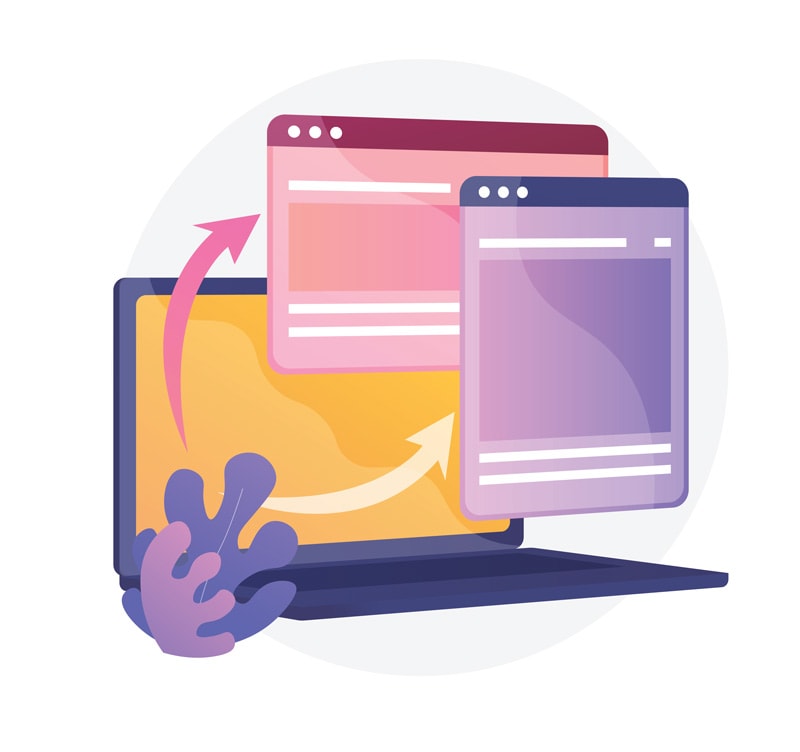Differences Between Standard Ecommerce Websites and B2B Distributor Portals

When comparing B2C to B2B ecommerce systems, it’s easy to assume that all you need for success in B2B is to beef up your pricing model.
Once you dig a little deeper, however, you’ll find out that’s not quite the case. Business sales cycles are more complex than consumer ones, and servicing those partners is a lot more complex than selling someone a widget off the street.
It’s not impossible to understand, however – it just involves a little more strategy.
Segmented B2B Audiences
The B2C approach of selling to end customers via your website is fairly easy to understand. Your website conversion strategies and content are generally geared toward two things. One: driving consumers to your website where they’ll make a purchase. Two: supporting your existing customer base in the hopes they’ll re-purchase.
When planning a B2B site, you’re faced with a larger variety of visitors with different (and sometimes competing) needs. Instead of one or two things to consider when forming a strategy, you’ll have many. A few examples include:
- Identifying which of your many visitors are most important for your web presence
- Choosing how to best reach these differing visitors and creating appropriate plans for each
- Providing in-depth, technical product information and support for distributors, which can look a lot different from information geared toward end users
When you’re trying to attract new distributors or wholesale partners, you’ll have to keep everyone in mind, retail visitors included. That means providing pathways to lead your audience to the useful information they’re looking for.
Supporting B2B Partners and Stakeholders
Generally, B2C sites support internal staff only. B2B sites support a variety of stakeholders.
You’re trying to make purchasing easy for your customers and fulfillment easy for your staff. When you bring distributors into the mix, things become more complex. You may be driving traffic to distributor websites for purchasing or you may be generating sales leads directly on your site and sharing them with your distribution partners.
Either way, you’re treading the line between speaking for yourself and speaking on behalf of your partners. This creates some natural tension – especially if your distributors service specific territories and you are putting yourself in the middle of determining who will receive appropriate leads.
Another sensitive line to walk is selling directly to end customers while still supporting a distribution channel. It may be tempting to try and do it all, but it’s important to make sure your distributors understand your business strategy and where they fit into it. Communication and organization ends up being key.
Sales and Fulfillment for B2B Customers
If your website will provide sales functionality for distributors or wholesalers, selling products frequently involves a more complex set of features to promote.
Commercial buyers need accurate information about stock status and delivery times in order to make proper internal plans. Since products may be manufactured or assembled in multiple locations it’s essential to be able to consistently communicate stock levels and lead times. Most businesses with distributor and wholesaler relationships already have a wide range of business rules around the purchasing process.
While it’s always best to keep ecommerce processes as simple as possible – especially at the start – you’ll want to make sure that you aren’t creating a system that requires a lot of change in process for either your customers or internal staff later on.
Distributor Portal Features and Advantages
One of the best ways to handle the complexity of content for distributors is to create a separate portal specifically for your partners.
This solves a lot of the problems of a segmented audience. It allows you to place your most complex content behind a login so your general audience isn’t confused by it.
You can also build a set of tools specifically to support distributor partners’ unique needs. When architecting your website platform, a distributor portal also gives you the opportunity to build a system that’s decoupled from your primary marketing channel.
Most marketing websites have a relatively short lifespan. If you are investing a lot in a set of tools to service your distributor audience, a distributor portal allows you to build a system that will last longer while still giving you necessary flexibility.
Distributor portals can provide a lot of great functionality. Let’s take a closer look at a few examples.
1. Streamlined Purchase Workflow
Your distribution partners probably know your products well and don’t need a lot of sales speak in order to make a purchase decision. They know what they want and are more interested in speed and accuracy. Designing a purchase cart system that is more streamlined can make their lives a lot easier.
2. Complex Checkout Options
When submitting a PO or pre-paid order you can provide options for additional tax information, 3rd party shippers as well as freight forwarding information, product customization requests, and delivery timing needs. Since freight and tax information can be difficult to calculate on the fly or may change as an order is processed, it’s common to keep payment methods on file, even though transactions generally don’t happen until an order is fulfilled.
3. Distributor Profiles
You may have a distributor locator on your website for end users to find their closest source for a product. Allowing distributors to manage their profiles ensures that they are happy with how they are portrayed on your website and gives them ownership of their part of the sales channel.
4. Lead Sharing
Most CRM tools aren’t used with both internal and external users. Using a distributor portal to allow your partners to see form submissions is a good way to collect sales leads on the website and share them with distribution partners without compromising security.
5. Stock and Lead Time Information
Inside knowledge of product availability allows distributors to plan their purchases and respond quickly to customers. Having a system in place where they have access to real time information can be beneficial to both them and you.
6. Integration
Building a great distributor portal general requires some direct access to an internal ERP or CRM system. Depending on the business needs, this can sometimes be accomplished by using hosted ecommerce tools like Shopify or BigCommerce. Both systems can handle a wide variety of shipping and payment options and both have a large community of developers who have created streamlined integrations with back-end systems. In some instances, a more customizable system like Magento may be a good fit if you have more complex business needs or if the ERP system provides a lot of native ecommerce support features.
Distributor portals can be a huge boon to any B2B business that’s looking to succeed when selling to prospects. If you’re interested in learning more about B2B website development, get in touch with our team. We can work with you to develop the best ecommerce site for your business, no matter how niche your industry may be.


